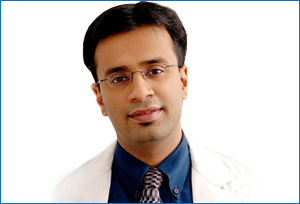Talking in general terms, Mandibular fracture is the fracture of the jaw. It is most common amongst males of ages 30 years and above. In Mandibular fracture there is a crack through the mandibular bone that may lead to inability to completly open one’s mouth, improper alignment of teeth or gum bleeding.
Causes
The Mandibular fracture may be caused due to various reasons such as:
- Road Accident
- Hit from the side.
- Fall onto the chin.
- Extreme opening of the mandible while yawning or during dental treatment.
- Domestic violence.
- Assault
- Sport Injury
- Bone Tumour
Symptoms
Usually, the symptoms of Mandibular fracture occur right after the jaw trauma. Some of the symptoms and signs of the Mandibular fracture are:
- Pain in the jaw.
- Malocclusion that is you may feel that your teeth do not fit properly.
- Inability to open jaw.
- Problem in speaking
- Problem in chewing food.
- Swelling in the jaw.
- Displacement of the jaw.
- Numbness in lower lip or chin.
- Gum bleeding.
- Inability to close the mouth
Complications
Patient suffering from the Mandibular Fracture may suffer through temporary complication such as problem in speaking, chewing food, and opening of the mouth. These problems can be solved with in few days after undergoing treatment and there is a very low risk of further complications. But, if the Mandibular fracture is not treated on time, it may lead to many serious or life threatening complications. The patient may suffer from blockage of airways, bleeding, and aspiration of blood, food or fluid in the lungs etc. Sometimes, the patient may also develop face or jaw infection, misalignment of teeth and TMJ dislocation.
Treatment
The mandibular fracture can be treated either by surgery or by the use of antibiotics. The peri operative and pre operative antibiotics reduces the risk of infection, especially in the dentate portion.
- Reduction:
In reduction, doctors approximate the ends of the broken bone edge. Reduction can be performed in two ways, either by open technique or by the closed technique. In the open technique, the doctor conducts an incision, finds the fracture and manipulates it physically into its place. In the closed technique, incision is not employed.
If the fracture occurs in the tooth area, teeth alignment will lead to fracture segment alignment. Circumdental wiring is generally used for the alignment of the teeth. Circumdental wiring comprises of a wire strand of gauge 24 or gauge 26 that is wrapped around each tooth. In the end, to the wire, a stainless steel arch bar is attached. The alignment of the top (maxillary) and bottom (mandibular) teeth brings the fracture segment in place. Bonding technology can be also used with arch bars to reduce the segments.
- Fixation:
Various fixations can also be used to treat the mandibular fracture. In the closed reduction with indirect fixation, on the top (maxillary) and bottom (mandibular) teeth, an arch bar is fixed which is further secured by the wire loops.
To secure the maxillary and mandibular detention, various alternatives are also available in the market such as Ivy loops, resin bonded arch bars, orthodontic bands and the MMF bone screw.
In the closed reduction technique with the direct skeleton fixation, titanium screws that have holes in the head are screwed in the basal bone, the wires are then passed through the skin, goes in the mandibule, around the bottom, then is passed through the zygomatic buttresses or pirifrom rim and is then finally joined together. This method of treatment can be used if the patient does not have any teeth and a rigid internal fixation cannot be employed.
In the open reduction technique with the direct skeleton fixation, an incision is conducted to directly mandibulate the bones, to make the fracture ends meet. This can be done rigidly with the use of screw and plate or screws or non-rigidly with the use of transosseous wire. A various combination of plate and screw are available, these days, including non-compression plate, compression plate, mini plates, leg screws and biodegradable plate.
External fixation is usually employed when the bone is infected or is shattered into pieces or there is a bullet wound. In this treatment method, on both the sides of fracture, long screws are passeD through skin, then they are fixed into their place by the use of external fixator.
The best doctor to treat your mandibular fracture:
Dr. Debraj Shome is a renowned facial plastic surgeon based in Mumbai. He is the best in the industry and will provide you with the most comfortable and efficient treatment that too in very affordable price slabs. At present, he is a consultanting surgeon at many of the top hospitals in Mumbai including Breach Candy Hospital, Saifee Hospital, and Apollo Spectra Hospital. He was also recently awarded with the prestigious title of ‘Best Plastic Surgeon In India’.


